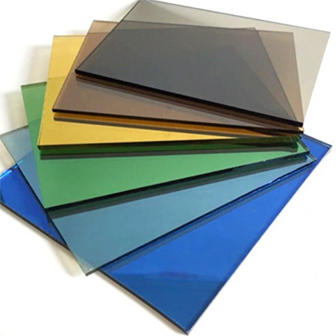Dec . 10, 2024 00:59 Back to list
Innovative Designs in U-Glass for Modern Architecture and Interior Spaces
The Versatility of U-Glass A Modern Architectural Marvel
In the realm of contemporary architecture and design, U-glass, also known as channel glass, has emerged as a remarkable material, dazzling architects and designers alike with its versatility, aesthetic appeal, and functional benefits. U-glass is recognized for its unique shape, resembling a “U” when viewed in cross-section, which allows for a variety of applications in both residential and commercial projects. This article explores the properties, advantages, and creative uses of U-glass, illuminating why it has become a favored choice in modern construction.
Properties and Advantages of U-Glass
One of the most appealing aspects of U-glass is its ability to harness natural light while maintaining privacy. The channel shape of the glass filters sunlight, producing diffused light that brightens spaces without the harsh glare of direct sunlight. This quality makes U-glass an excellent choice for areas where both daylighting and privacy are desired, such as bathrooms, lobbies, and office spaces.
Another significant advantage is its thermal insulation properties. U-glass can be designed with various thicknesses and insulation properties, allowing for improved energy efficiency in buildings. When installed correctly, it helps regulate indoor temperatures, ultimately reducing energy consumption and lowering heating and cooling costs.
Moreover, U-glass is highly durable and resistant to weathering, making it suitable for a wide range of climates and applications. It can withstand extreme temperatures and environmental conditions, ensuring longevity and reducing maintenance costs. Additionally, U-glass is available in various colors and finishes, providing designers with an expansive palette to work from, enabling creative expressions that enhance the overall aesthetic of a building.
Creative Applications of U-Glass
u glass

The applications of U-glass are as varied as its properties. Architects frequently utilize this innovative material to create stunning facades that capture attention while effectively managing light and heat. In commercial buildings, U-glass can be seen in storefronts and entrances, where its transparency can attract customers while still offering a degree of privacy to interior spaces. It also allows for continuous ventilation, as the installation techniques enable airflow without compromising the building’s security.
In residential settings, U-glass can be used effectively as partition walls or as part of a larger window system. Homeowners can integrate U-glass in areas such as sunrooms or patios, where the combination of light and visibility creates a serene and inviting atmosphere. Furthermore, its aesthetic flexibility allows homeowners to personalize their designs, choosing finishes and colors that complement their home’s overall theme.
One of the most striking uses of U-glass can be found in public buildings such as museums, galleries, and community centers. These spaces often require a fine balance of light management and artistic presentation. U-glass excels in this regard, serving as both a functional element and an artistic feature. The interplay of light through U-glass can enhance artworks on display or create unique ambiance for events, transforming how these spaces are experienced.
Conclusion
As we witness a growing emphasis on sustainability and innovative design in architecture, U-glass stands out as a forward-thinking material that meets these demands. Its ability to provide natural lighting, thermal insulation, and design versatility makes it a valuable asset in both commercial and residential projects. From contemporary urban buildings to serene residential homes, U-glass serves as a beacon of modernity, marrying practicality with aesthetics.
In the years to come, as architects and designers continue to push the boundaries of creativity and sustainability, U-glass is likely to play an increasingly pivotal role in shaping the landscapes of our cities and communities. Its unique characteristics and myriad applications ensure that it will remain relevant in the ever-evolving field of architecture, inviting us to reimagine the spaces we inhabit in fresh and visually captivating ways.
-
Safety and Style with Premium Laminated Glass Solutions
NewsJun.24,2025
-
Reinvents Security with Premium Wired Glass
NewsJun.24,2025
-
Premium Float Glass Line for Modern Architecture
NewsJun.24,2025
-
Low Emissivity Glass for Energy-Efficient Architecture
NewsJun.24,2025
-
High-Performance Insulated Glass Solutions for Modern Architecture
NewsJun.24,2025
-
Elevates Interior Style with Premium Silver Mirror
NewsJun.24,2025
Related PRODUCTS














